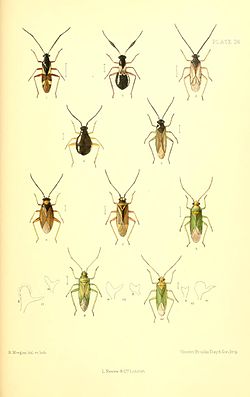You can help expand this article with text translated from the corresponding article in German. (July 2019)Click [show] for important translation instructions.
|
| Orthotylus bilineatus | |
|---|---|
 | |
| Orthotylus bilineatus depicted in Edward Saunders Hemiptera Heteroptera of the British Islands (figure 7) | |
| Scientific classification | |
| Kingdom: | Animalia |
| Phylum: | Arthropoda |
| Class: | Insecta |
| Order: | Hemiptera |
| Suborder: | Heteroptera |
| Family: | Miridae |
| Genus: | Orthotylus |
| Species: | O. bilineatus |
| Binomial name | |
| Orthotylus bilineatus (Fallén, 1807) | |
Orthotylus bilineatus is a species of bug from the Miridae family that can be found everywhere in Europe (except for Belgium, Greece, Lithuania, Portugal, and Yugoslavian states). [1] To the east it spreads over the Palearctic to the Russian Far East and Siberia to China and Japan.